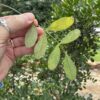Guide to Choosing Native Tree Species for North Texas
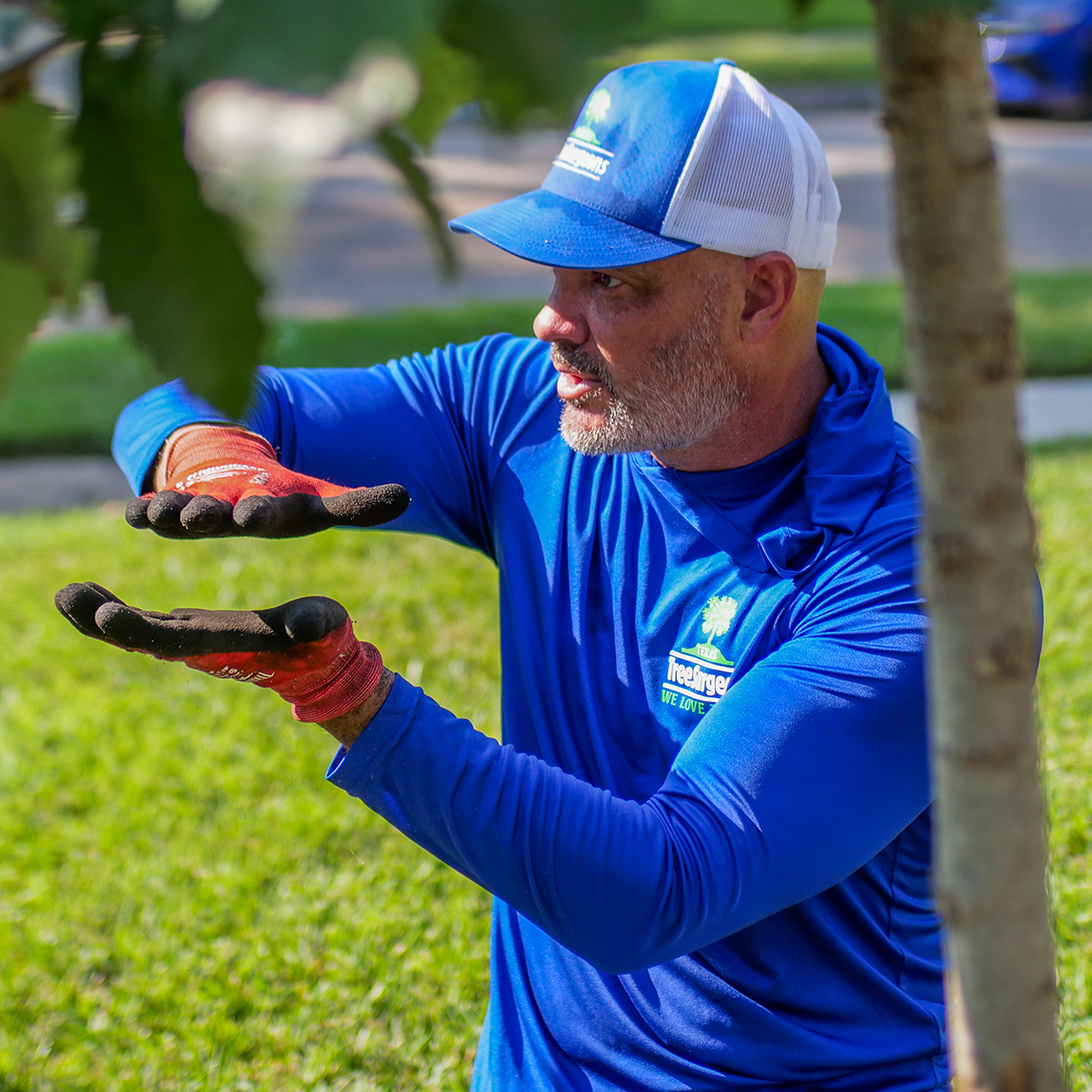
Choosing the right tree species for your garden can be a daunting task, especially in the unique climate of North Texas. Selecting native species can ensure your trees thrive in the local environment while supporting biodiversity. In this guide, we’ll explore the best native tree choices for North Texas and explain why they are preferred to non-native alternatives.
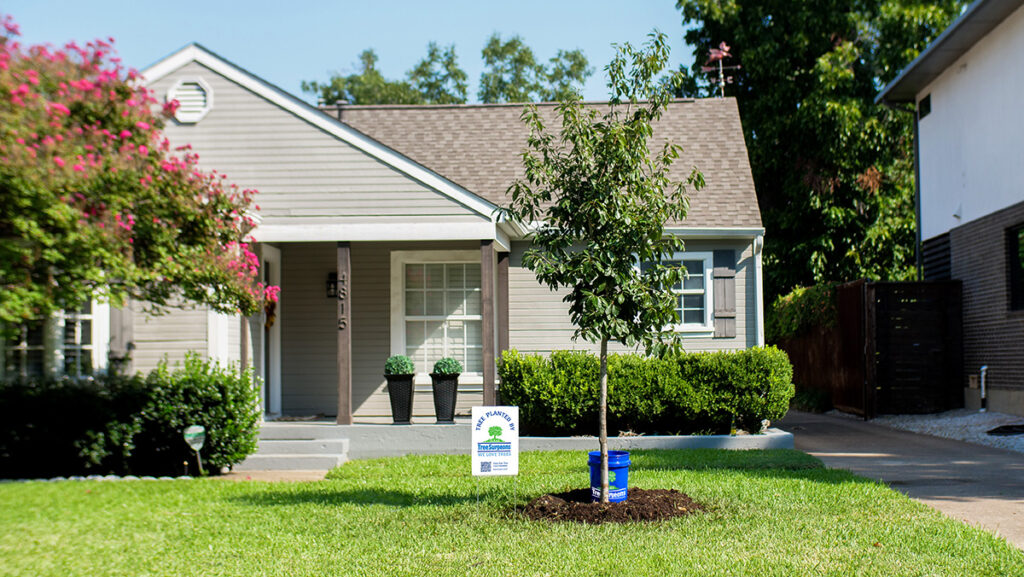
Understanding the Importance of Native Trees
Native trees have evolved to thrive in specific regions, making them well-adapted to local soil, climate, and wildlife. They require less water and maintenance, and they are more resistant to local pests and diseases. This resilience makes them a smart choice for homeowners looking to beautify their landscapes while minimizing environmental impact. Native trees also provide critical habitats for native birds and insects, fostering a balanced ecosystem right in your backyard. While non-native species might initially seem appealing to provide a desired aesthetic they often cannot provide the same level of environmental support as native trees can.
Moreover, planting native trees can significantly improve soil quality. Their deep and extensive root systems help prevent soil erosion and aid in water retention, crucial in areas where water scarcity might pose a challenge. This characteristic is particularly beneficial in the climate of North Texas, where droughts can be frequent and severe. By choosing native species, home owners can create a self-sustaining environment that aligns with nature’s inherent processes, which can be both rewarding and effective in the long run.
Top Native Tree Species for North Texas
Some popular choices include the Chinquapin Oak, Cedar Elm, and the Bald Cypress. These species offer shade, beauty, and essential habitats for local fauna. They thrive in the local environment, providing shade and reducing the urban heat island effect that is increasingly common in urban settings.
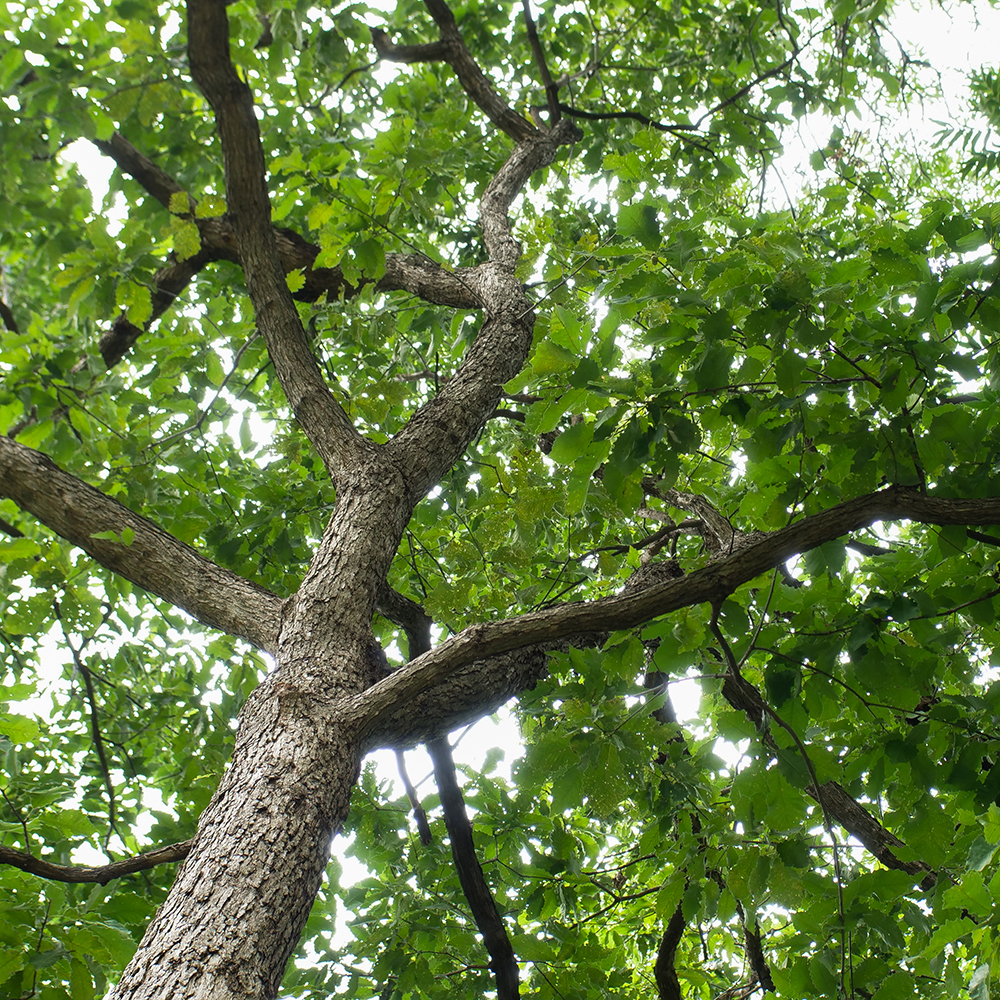
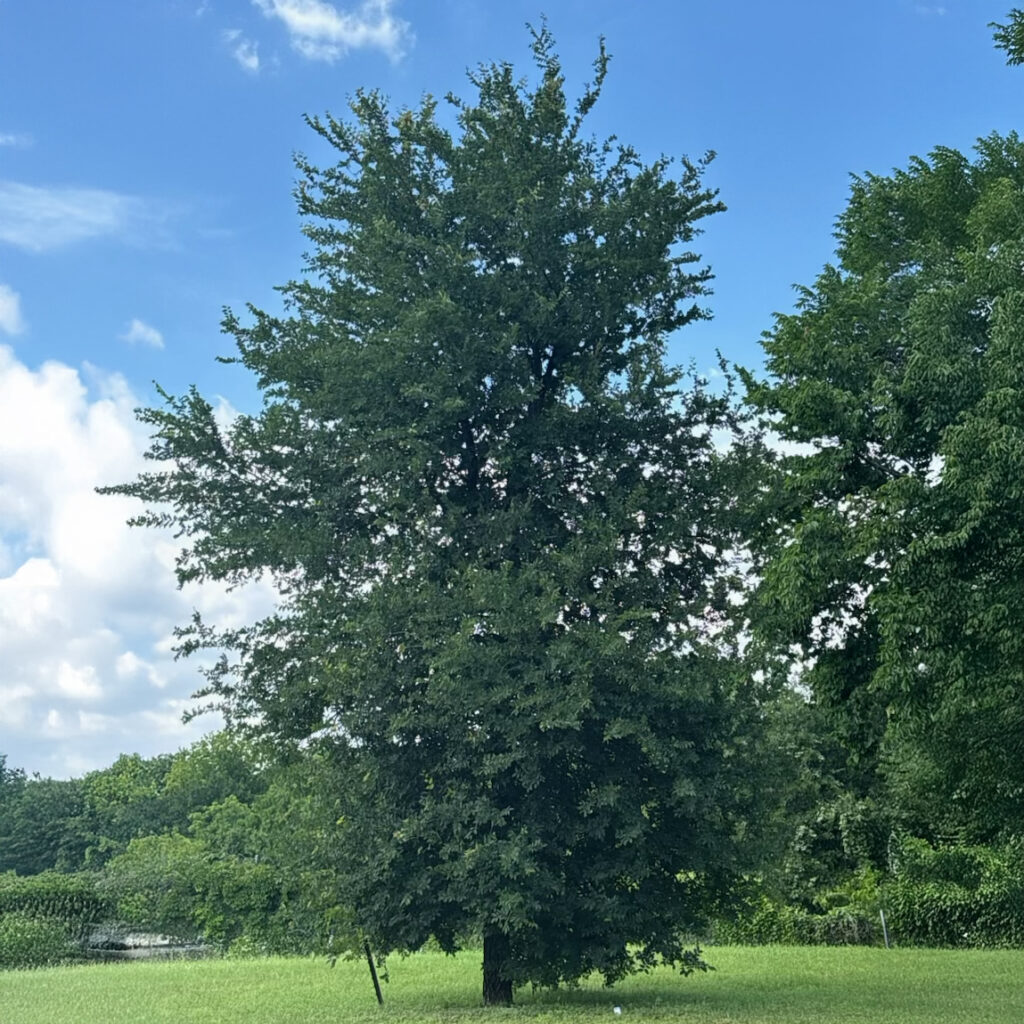
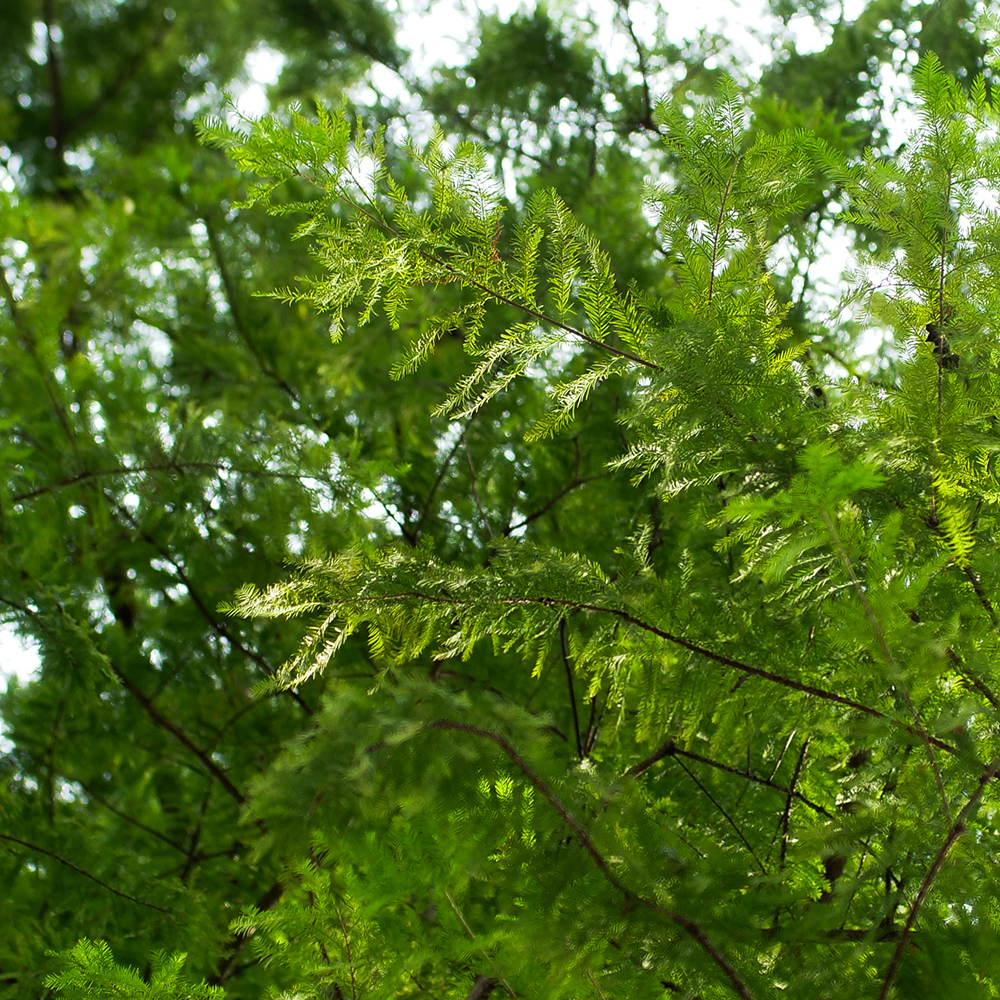
With their distinctive leaves Chinquapin Oaks have beautiful fall color ranging from yellow to bronze. Bonus fact is that oak wilt does not affect this species of oak as much as red and live oaks.
Cedar Elms adaptability to various soil types and resistance to climatic fluctuations make them a reliable choice. They grow relatively quickly and once established, require little maintenance. Additionally, the Bald Cypress is suitable for areas prone to flooding, making it perfect for locations with fluctuating water levels. These trees not only add to the aesthetic of any landscape but also play a crucial part in maintaining the environmental health of the region. Explore more about these species through our tree planting services.
Benefits of Planting Native
Non-native trees often require more resources and can disrupt local ecosystems. Native trees support biodiversity and reduce the need for pesticides and fertilizers. This means less chemical runoff into waterways and a safer environment for you and the local fauna. Trees not native to Texas can become invasive, competing with local plants and disrupting the habitat balance. In contrast, native species have coexisted with the local flora and fauna for centuries, establishing an equilibrium that supports vibrant ecosystems.
Furthermore, native trees are crucial in supporting local pollinators like bees and butterflies. These species have co-evolved with native trees, relying on them for food and habitat. By planting native trees, you contribute to the ongoing health and survival of these essential creatures. This system of mutual dependency is one of the hidden but powerful advantages of using native species in your landscaping projects.
Considerations for Planting and Caring for Native Trees
When choosing a tree, consider not only its aesthetic appeal but also its growth habits and ecological benefits. Proper planting site preparation and choosing the right species for your specific area are crucial for success.
It is also important to understand the specific light, water, and soil requirements of each tree species. Native trees, though robust, still require appropriate conditions to flourish. Take the time to study your garden and observe the microclimates within it, selecting species that will naturally prosper. Additionally, regular monitoring for pests and diseases, even if significantly lower than that required by non-native species, will ensure healthy and vigorous growth of these trees. Reach out to professionals if you need assistance in optimizing conditions for your new trees.
Adapted Trees Are Also a Great Choice
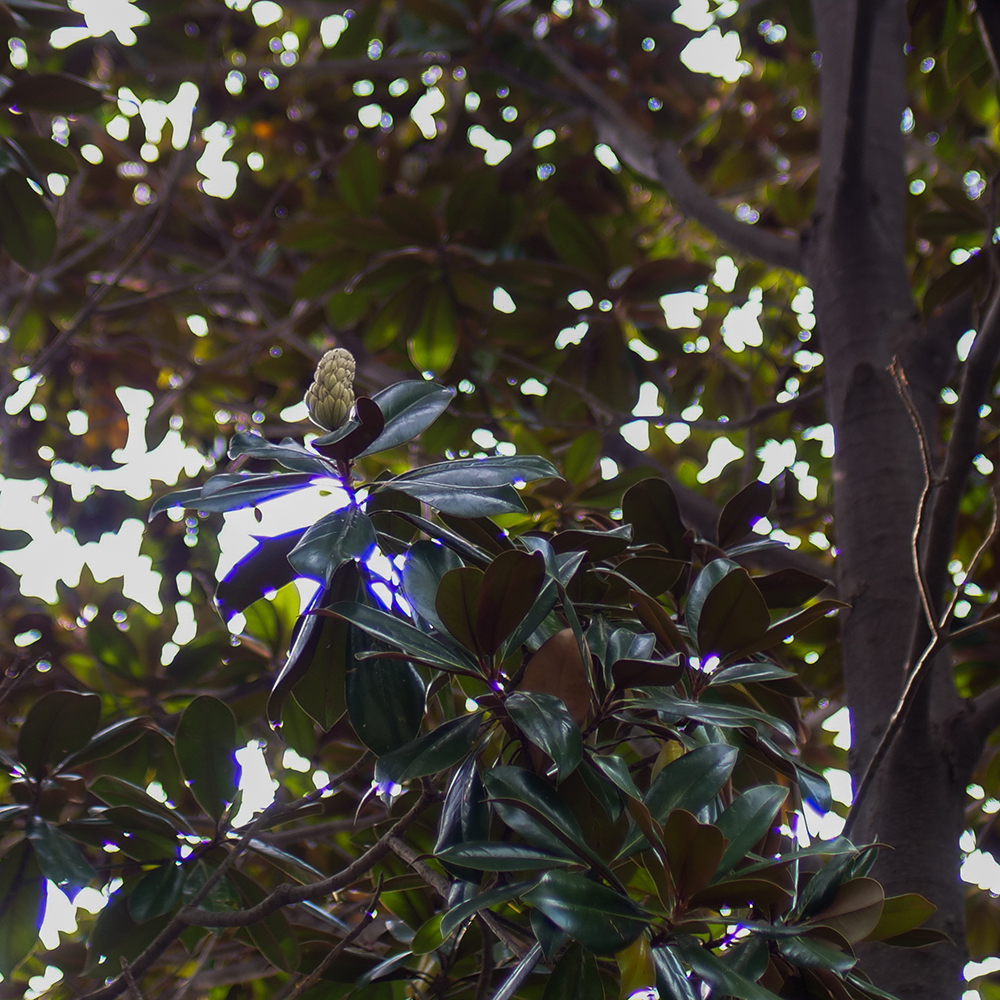
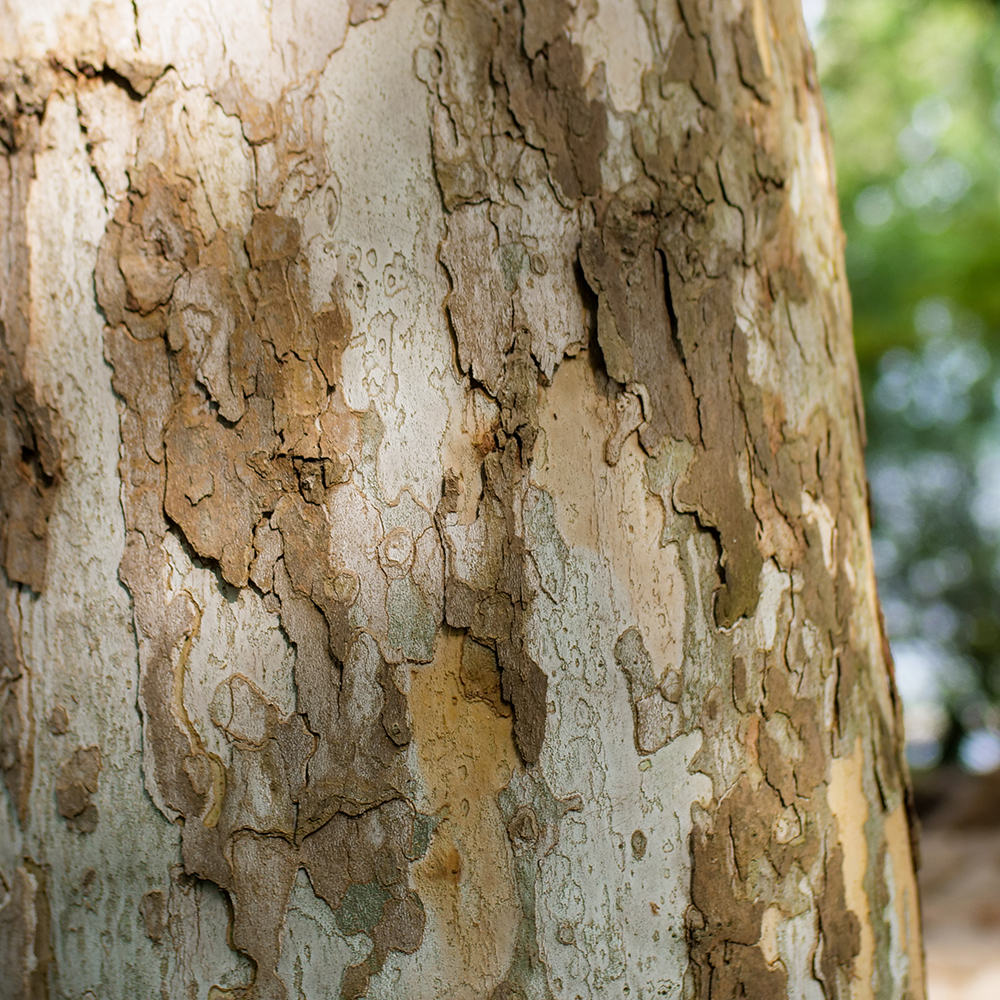
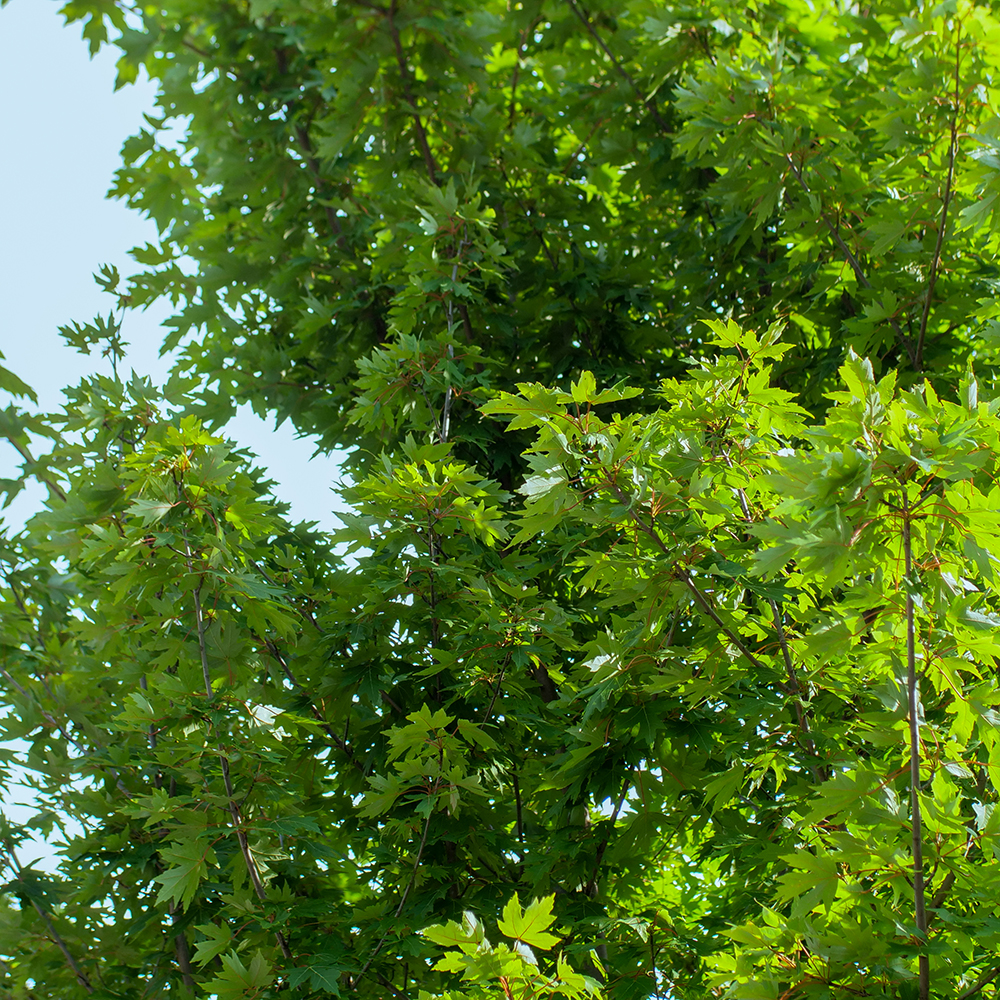
Yes, we’ve been touting why native trees are preferred in landscaping but some adapted trees do equally well. Trees like; Magnolia Little Gem, Mexican Sycamore, and Autumn Blaze Maple do well in North Texas while also providing stunning beauty. Again taking into consideration the micro-environment when selecting an adapted tree and staying clear of trees that will require a lot of upkeep to have them thrive like; Italian Cypress, Leyland Cypress, or River Birch. They are prone to a lot of insects and diseases in addition to not being acclimated to the climate found in North Texas.



Embrace Native Beauty for a Sustainable Future
By planting native tree species, you contribute to a healthier and more sustainable local ecosystem. Not only do these trees require less maintenance and water, but they also support local wildlife. Be a part of preserving North Texas’s natural beauty by making informed choices that benefit both your garden and the environment.

At Texas Tree Surgeon we love trees but not all trees thrive well in North Texas. Making educated selections will save you money and heartache down the road. If you are struggling picking the right tree for your property we offer tree planting services and can assist in selection and placement.
Related Blogs
Similar blogs related to this topic
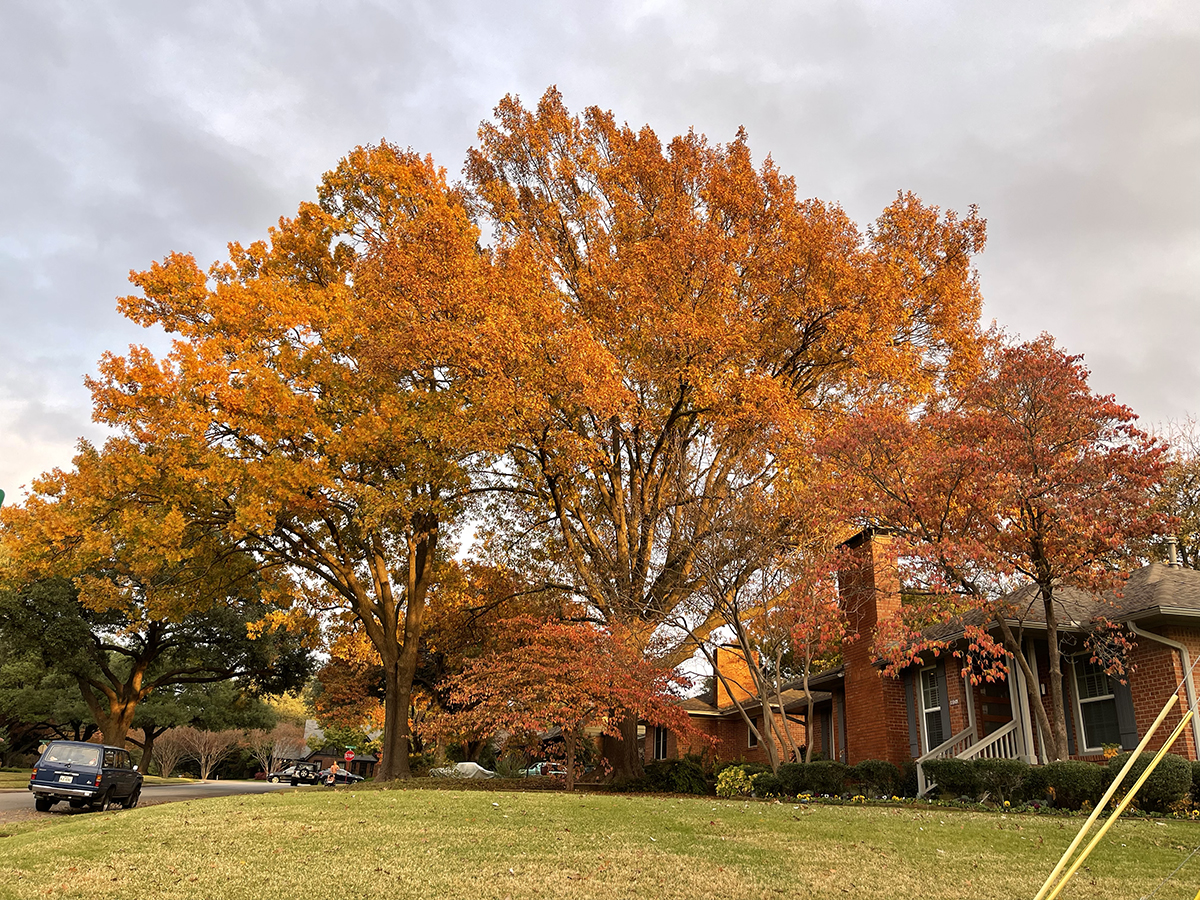
North Texas Fall Foliage: Why Leaves Change Color
North Texas weather changes as quickly as the mood of a toddler. Oscillating from hot to cold. One thing that clearly denotes autumn in North Texas is the fall foliage. The color shift may not…
Read more
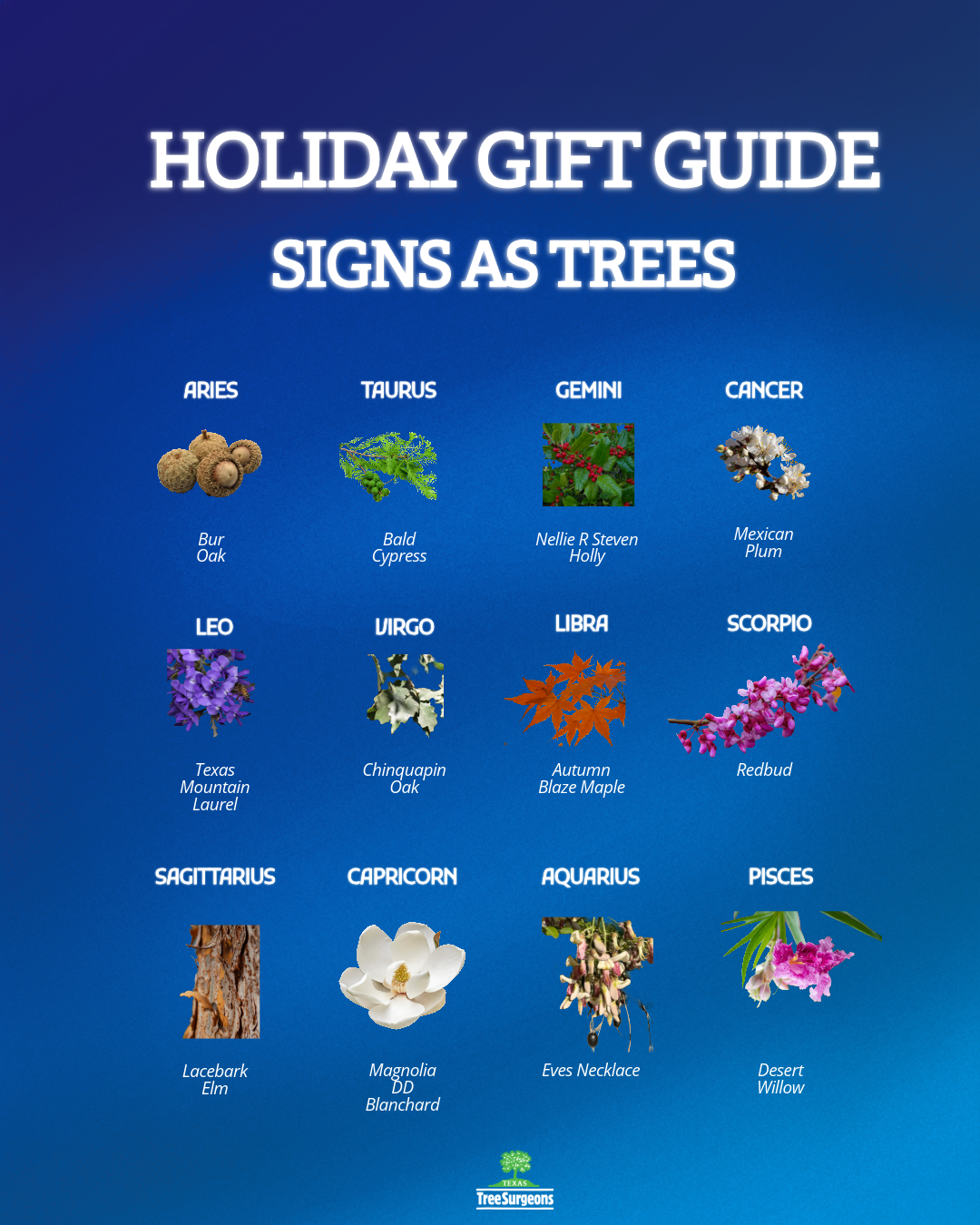
Holiday Gift Guide, Zodiac Signs as Trees
This holiday season a gift that keeps on giving in a time of over consumption is the most ethical and thoughtful gift. It is investment in a shared future that benefits their home and the…
Read more
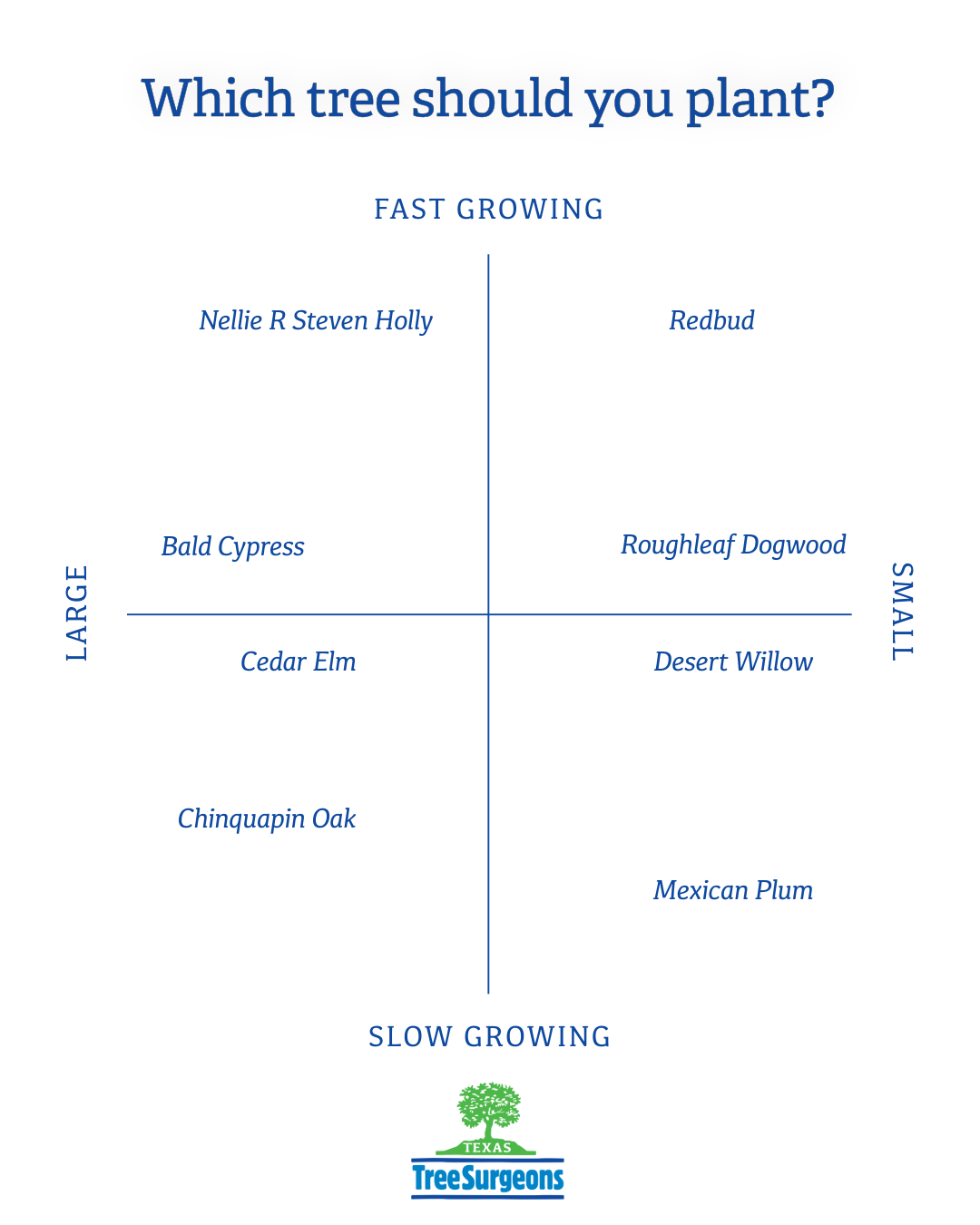
Which Tree Should You Plant?
Tree selection needs to include a balance of preference in style with species selection that can thrive in North Texas unique soil conditions and climate. Below are some essential questions to ask yourself to ensure…
Read more
